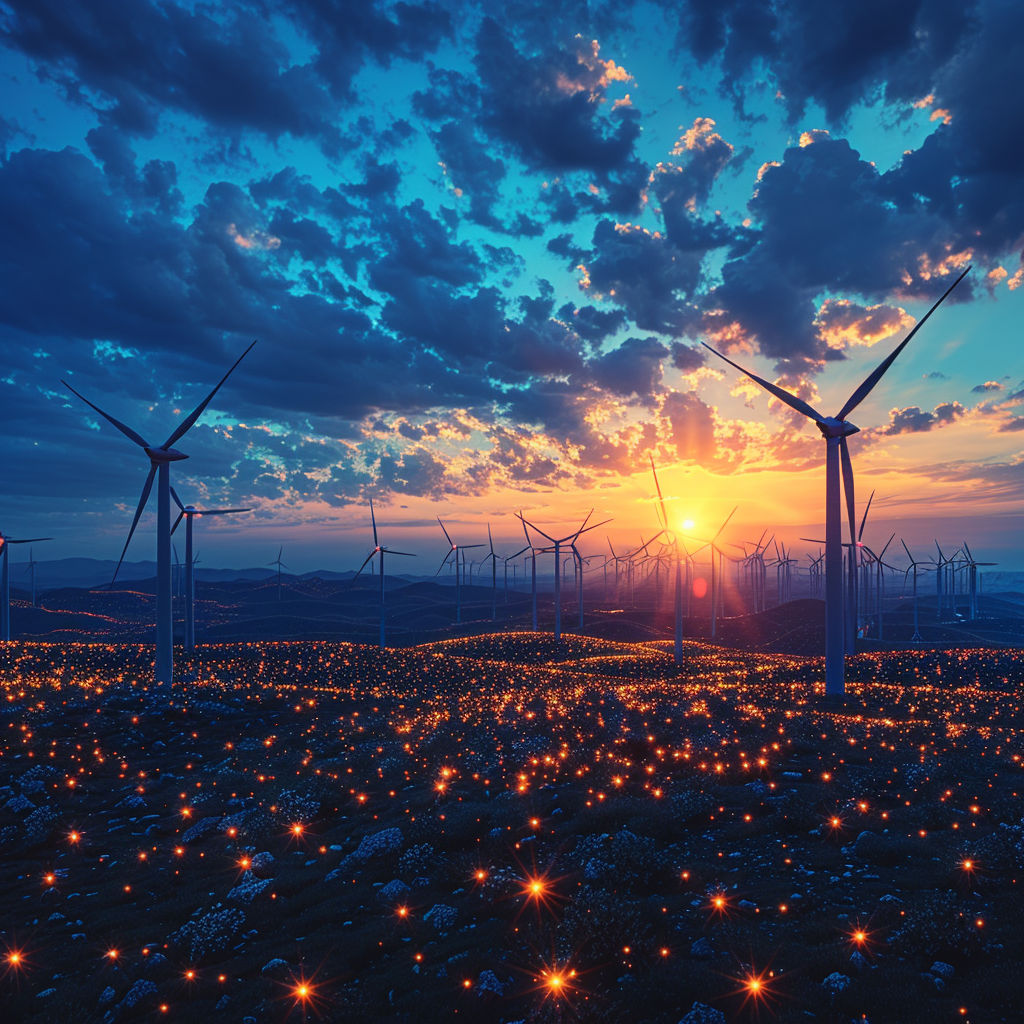In an era where climate change poses a significant threat to our planet, the need for renewable energy sources has never been more critical. Harnessing wind power has emerged as a promising solution in paving the way towards a sustainable future. Through innovative technology and strategic planning, wind power offers immense potential in reducing carbon emissions and decreasing reliance on fossil fuels. In this article, we will explore the various aspects of harnessing wind power and how it can contribute to creating a greener world for generations to come. Join us as we delve into the exciting possibilities of utilizing wind energy for a cleaner and more sustainable future.
The History of Wind Power
Wind power has been used for centuries by civilizations around the world, with some of the earliest recorded instances dating back to ancient Persia and China. The modern history of wind power began in the late 19th century, with the development of windmills for pumping water and generating electricity in rural areas. However, it wasn’t until the oil crisis of the 1970s that interest in wind power as a renewable energy source truly took off.
Advancements in technology have led to significant improvements in harnessing wind power over the years. Today, massive wind turbines dot landscapes across countries, turning kinetic energy from the wind into electricity that can be used to power homes and businesses. As concerns over climate change continue to grow, there is a renewed emphasis on expanding wind power capacity as part of efforts to transition towards cleaner, more sustainable sources of energy. With ongoing innovation and investment in this sector, wind power holds great promise for shaping a greener future for generations to come.
The Mechanics of Wind Turbines
Wind turbines are the backbone of harnessing wind power as a renewable energy source. The mechanics behind wind turbines involve converting the kinetic energy from the wind into mechanical power through the rotation of turbine blades. This rotational motion drives a generator that produces electricity, which can be fed into the grid for consumption. The efficiency and output of a wind turbine depend on factors such as blade design, turbine size, and wind speed.
Additionally, modern advancements in technology have enabled the development of larger and more efficient wind turbines. These turbines are equipped with features like variable pitch blades and sensors that optimize their performance in varying winds. Strategic placement of wind farms in areas with consistent high winds further enhances their productivity. Overall, understanding the mechanics of wind turbines is crucial in maximizing their potential to generate clean and sustainable energy for our future needs.
Benefits of Wind Power
Wind power offers numerous benefits that make it a viable alternative to traditional energy sources. One of the key advantages of wind power is its environmental impact – unlike fossil fuels, wind power generates electricity without producing harmful greenhouse gases or air pollutants. This not only helps in combating climate change but also improves air quality and public health. Additionally, wind power is a renewable resource, meaning it will never run out and can provide a consistent source of clean energy for years to come.
Another benefit of wind power is its economic advantages. Wind farms create jobs both in manufacturing and maintenance, stimulating local economies and providing new opportunities for communities. Furthermore, as technology advances and production costs decrease, wind power has become increasingly cost-effective compared to conventional sources of energy. This makes wind power an attractive option for businesses looking to reduce their carbon footprint while also saving money on electricity bills in the long term. Overall, harnessing wind power presents a sustainable solution that addresses both environmental concerns and economic considerations in our quest for a greener future.
Challenges and Solutions in Wind Power
One of the key challenges in wind power is the intermittent nature of wind itself. Wind turbines can only generate electricity when there is sufficient breeze, which means that energy production can fluctuate throughout the day and seasonally. This inconsistency presents difficulties in meeting constant electricity demand and integrating wind power into existing grids. One solution to this challenge is the development of advanced energy storage technologies, such as batteries or pumped hydroelectric storage, to store excess energy during times of high wind generation for use when winds are low.
Another challenge in wind power is the visual impact and potential harm to wildlife associated with large-scale wind farms. Concerns about aesthetics have led to opposition from local communities and regulatory hurdles in some areas. To address this issue, researchers are exploring new designs for wind turbines that are quieter and less obtrusive visually, as well as conducting thorough environmental impact assessments before siting new projects. Additionally, efforts to improve communication with stakeholders and involve them in project planning can help mitigate concerns and foster more widespread acceptance of wind power as a clean energy source for our future needs.
Global Impact of Wind Power
Wind power has a global impact on the environment by reducing greenhouse gas emissions and decreasing our dependence on non-renewable energy sources. By harnessing the power of wind, countries are able to generate clean electricity without contributing to air pollution or climate change. This shift towards renewable energy plays a crucial role in mitigating the effects of global warming and preserving the planet for future generations.
Furthermore, wind power creates economic opportunities through job creation in the manufacturing, installation, and maintenance of wind turbines. As more countries invest in wind energy infrastructure, it not only stimulates growth in the green energy sector but also promotes innovation and technological advancement. By transitioning to sustainable energy sources like wind power, nations can strengthen their economies while simultaneously protecting the environment and promoting sustainability on a global scale.
In addition to its environmental and economic benefits, wind power also enhances energy security by diversifying a country’s energy mix. With unpredictable fluctuations in fossil fuel prices and finite resources, investing in renewable options like wind power ensures long-term stability and independence from imported fuels. This strategic approach to energy production reduces reliance on volatile markets while fostering resilience against shifting geopolitical dynamics. Overall, harnessing wind power is essential for achieving a cleaner, greener future on a worldwide scale.
Innovations in Wind Power Technology
Wind power technology has come a long way in recent years, with ongoing innovations enhancing the efficiency and effectiveness of harnessing this abundant energy source. One key development is the advancement of turbine design, with larger blades and taller towers allowing for increased energy production. Additionally, improvements in materials and manufacturing processes have led to more durable and cost-effective turbines, making wind power a more competitive option in the renewable energy market.
Another exciting innovation in wind power technology is the integration of smart grid systems. These advanced technologies enable better management of fluctuating wind conditions, allowing for greater reliability and stability in electricity generation. Furthermore, advancements in storage solutions such as battery technology are helping to address the intermittency issues associated with wind power, ensuring a more consistent supply of clean energy. By continuously pushing the boundaries of technological advancements, the future of wind power looks promising as we strive towards a sustainable and renewable energy future.
Policies and Initiatives Promoting Wind Power
Policies and initiatives promoting wind power play a crucial role in encouraging the adoption of renewable energy sources. Governments around the world have implemented various incentives such as tax credits, subsidies, and feed-in tariffs to support the development of wind power projects. These policies not only help in reducing greenhouse gas emissions but also create jobs and stimulate economic growth in the renewable energy sector.
Additionally, initiatives focused on research and development have led to technological advancements in wind power generation. Investments in improving turbine efficiency, storage capabilities, and grid integration have made wind power more reliable and cost-effective. Collaborative efforts between governments, industry stakeholders, and environmental organizations have also resulted in the expansion of wind farms across different regions, contributing significantly to increasing global electricity production from sustainable sources.
Overall, policies and initiatives promoting wind power are essential for accelerating the transition towards a cleaner energy future. By creating a supportive regulatory environment and investing in innovative technologies, countries can capitalize on the vast potential of wind energy to reduce their carbon footprint and mitigate climate change effects effectively. Embracing wind power as a primary source of electricity generation will not only benefit current generations but also ensure a more sustainable environment for future generations to thrive.

